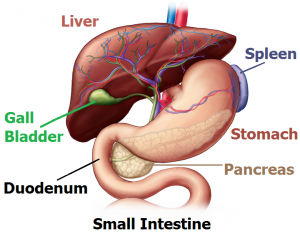Obscure Organs – Part 5
 Culinary art is a fine mix of visual pleasure, olfactory (smell) attraction, nutritional benefit, and gustatory (taste receptors) delight. Although we all appreciate a fine meal, we don’t care to consider what happens to our beautiful, delicious food immediately after it is swallowed. Yet the wonder of the intricate, highly orchestrated digestive process is a marvel of exquisite chemical engineering that should give us grounds for praising our great Creator. From the amazing cocktail of chemicals that our stomach begins to secrete at the very smell of food, to the duodenum (the beginning of the intestines), which neutralizes powerful stomach acids so we don’t digest our own gut the way we break down food, the digestion is a finely-tuned process!
Culinary art is a fine mix of visual pleasure, olfactory (smell) attraction, nutritional benefit, and gustatory (taste receptors) delight. Although we all appreciate a fine meal, we don’t care to consider what happens to our beautiful, delicious food immediately after it is swallowed. Yet the wonder of the intricate, highly orchestrated digestive process is a marvel of exquisite chemical engineering that should give us grounds for praising our great Creator. From the amazing cocktail of chemicals that our stomach begins to secrete at the very smell of food, to the duodenum (the beginning of the intestines), which neutralizes powerful stomach acids so we don’t digest our own gut the way we break down food, the digestion is a finely-tuned process!
Just consider the wonder of gut neurons. The GI tract has its own nervous system, which consists of over 100 million nerve cells. You could say that our stomach (with more neurons than the spinal chord) truly has a mind of its own! The enteric nervous system is the in-house traffic control of the alimentary canal. This staff of neurons communicates among themselves to carefully choreograph all the chemical flows, adding a dab of protease enzyme here and a touch of bile base there. Two main nerve centers (called plexuses) interconnect all along the GI tract, measuring and regulating the digestive activity throughout the entire length. All of these nerves connect to each other like chicken wire, constantly providing feedback and making minute adjustments in the process to maximize the nutrient uptake from our food. Think about all of that when you sit down to your next fine-dining meal!
Posted on June 1, 2017 by dwoetzel.
